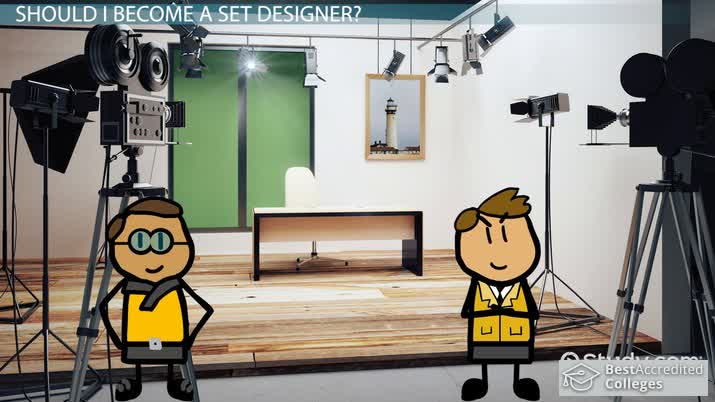
Are you wondering how much does a UX designer make? This article will discuss the salary ranges, education requirements, and where a UX designer can be found. Read on to find out! Here are the average UX designers' salaries in Australia, Canada and the UK. While there are many factors that can influence the salary of UX designers, the most important factor is passion for UX design. You might be interested in a career within this field. Read on!
Salary ranges
The annual average salary for UX designers is $98,130. This is slightly less than the national median, but still much lower than salaries in other sectors. UX designers in Ireland have a slightly higher salary than other professions like engineers and accountants. The national average salary for UX designers in Ireland is $75,000. However, the salaries in the United States may be considerably higher. UX designers are also eligible for bonuses. On average, they receive $4,114 in bonus money. 39% of UX designers receive a bonus each and every year.
Like any other job, UX designers' salaries vary from industry to industry. Sectors with many digital products are more focused on user experience than industries such as dentistry which have fewer but still complex users. There are plenty of opportunities in technology and telecommunications, and the sector is growing between five- and six percent each year. Consider these factors when considering a career as a telecommunications professional:

Education requirements
An undergraduate degree in computer science, or a related field, may be required for UX designers. While software engineering and computer science provide a strong technical foundation, digital media and interactive design offer a visually appealing front-end. There are some common requirements that vary by school but include a competitive GPA as well as SAT and ACT scores and letters of recommendations. Sometimes, you may also need to submit a personal essay.
M.K. After M.K. has completed her degree, she might want to find work in a UX design firm. This will give her the opportunity to gain experience and help her decide if this career path is right. Once she has a portfolio and some clients, she can take on side jobs to earn a steady income. Her steady income will be assured by developing a network of clients after she leaves a company.
Localities
Location, experience, company size, and other factors all affect the salary of a UX designer. An entry-level UX designer might earn approximately PS27,000 in a large market. A designer working in a smaller area may make less. The Bureau of Labor Statistics, (BLS), states that UX design professionals in the US make the highest starting salaries.
The salary range for a UX design salary depends on the location, but it can vary widely across major UX cities. Payscale has found that UX designers living in San Francisco, Seattle, or London make 32% more per year than their counterparts from the U.S. But if you're a seasoned UX designer, moving to a smaller city or market may be an attractive option.

Experience
The overall user experience refers the experience that a product/service provides. It includes the entire use experience, from purchase to ownership to troubleshooting. UX designers do not focus only on the usability or efficiency of a product. A good user experience is one that meets the individual needs and wants of a particular user. There are many methods to design for a good UX.
Below are the typical education and experience requirements of a UX designer. Although experience is desirable in designing and developing websites, mobile apps, and software, a UX designer should also be familiar with basic coding languages such as HTML or CSS. It is important to have experience in website navigation design. Also, it is essential to understand accessibility and usability issues. Candidates should be passionate about UX design and open to constructive criticism.
FAQ
What should I include in my Portfolio?
These should all be included in your portfolio.
-
Some examples of your past work.
-
Links to your website (if applicable).
-
Link to your blog.
-
Here are some links to social media pages.
-
Links to online portfolios of other designers.
-
Any awards you've been awarded.
-
References.
-
Take samples of your work.
-
Links showing how you communicate with clients.
-
Here are some links to show that you're eager to learn new technologies.
-
Links showing that you're flexible.
-
Links that show your personality
-
Videos showing your skills.
Can I use HTML & CCS to build my website?
Yes, you can! It's possible! You need to have basic knowledge in web design and programming languages, such as HTML (Hyper Text Markup Language), CSS and Cascading Style sheets (Cascading CSS Sheets). These languages can be used to create websites which can then be viewed by everyone who has an internet connection.
How to design a website?
The first step is to understand what you want your site to do for your customers. What are they looking at when they visit your site.
What problems might they have if they don't find what they're looking for on your site?
Now you need to figure out how you can solve these problems. Your site must look professional. It should be simple to navigate and use.
Your site should be extremely well designed. It shouldn't take too much time for it to load. If it takes too long, people may not be able to stay as long. They will go elsewhere.
It is essential to determine where all your products reside before you start building an eCommerce website. Are they in one place? Are they in one location?
Decide whether you plan to sell one product at a time or several products. Are you looking for a single product to sell or multiple products?
You can start building your site when you've decided on these questions.
Now, it's time to take care of the technical aspects. What will it take to make your site work? It will it work fast enough? Can it be done quickly by people using their computers?
Are people able to purchase something without paying extra? Will they have to register with your company before they can buy something?
These are vital questions you need to ask. Once you know the answers to these questions, you'll be ready to move forward.
What is a static site?
A static website contains all content stored on a server that visitors can access via web browsers.
The term "static", refers to the absence or modification of images, video, animations, and so forth.
This site was originally intended for corporate intranets. However it has since been adopted and modified by small businesses and individuals who require simple websites without complex programming.
Because static websites require less maintenance, they have grown in popularity. It's easier to update and maintain static sites than a website that has many components (such blogs).
They also tend to load faster than their dynamic counterparts. They are great for people who use mobile devices and have slow Internet connections.
Additionally, static websites are safer than dynamic sites. It is difficult to hack into static websites. Hackers can only access the data contained in a database.
There are two main methods to create static websites:
-
Using a Content Management System (CMS)
-
Creating a Static HTML Website
The best one for you will depend on your specific needs. I recommend a CMS if you're just starting to create websites.
Why? Because you have complete control over your website. A CMS means that you don't have to hire someone to set up your website. Upload files to the web server.
You can still learn code and create static sites. However, you will need to put in some time to learn how to program.
What is a UI Designer?
A user interface (UI) designer creates interfaces for software products. They are responsible to design the layout and visual elements for an application. Graphic designers may also be part of the UI designer.
The UI Designer should be a problem solver who understands how people use computers and what makes them tick.
A UI designer must have a passion about technology and software design. He/she should be familiar with all aspects in the field, from creating ideas to implementing them into code.
They should be able create designs with various tools and techniques. They should be able solve problems creatively by thinking outside the box and come up with innovative solutions.
They should be detail-oriented, organized and efficient. They should be able develop prototypes quickly, efficiently and accurately.
They should feel at ease working with clients, large and small. They should be able, and willing, to adapt in different environments and situations.
They should be able to communicate effectively with others. They must be able express themselves clearly and concisely.
They should be well-rounded and possess strong communication abilities.
They should be highly motivated and driven.
They should be passionate and dedicated to their craft.
Statistics
- The average website user will read about 20% of the text on any given page, so it's crucial to entice them with an appropriate vibe. (websitebuilderexpert.com)
- Studies show that 77% of satisfied customers will recommend your business or service to a friend after having a positive experience. (wix.com)
- Did you know videos can boost organic search traffic to your website by 157%? (wix.com)
- When choosing your website color scheme, a general rule is to limit yourself to three shades: one primary color (60% of the mix), one secondary color (30%), and one accent color (10%). (wix.com)
- In fact, according to Color Matters, a signature color can boost brand recognition by 80%. There's a lot of psychology behind people's perception of color, so it's important to understand how it's used with your industry. (websitebuilderexpert.com)
External Links
How To
How can I choose the right CMS for me?
In general, there are two types of Content Management System (CMS) Web Designers use Static HTML and Dynamic CMS. WordPress is the most well-known CMS. But when you want to make your site look professional and well-organized, you should consider using Joomla! A powerful open-source CMS allows you to implement any website design without coding knowledge. It's simple to install and configure. Joomla includes thousands of templates and extensions so you don't have to hire a programmer to build your site. Joomla is easy to use and free to download. Joomla can be used for many purposes.
Joomla is a powerful tool to help you manage every aspect of your site. It offers features like a drag-and-drop editor, multiple template support and image manager. You can also manage your blog, blog, eCommerce, news feeds, and more. Joomla is an ideal choice for anyone wanting to build a website, without needing to know how to code.
Joomla works on almost all devices. This makes it possible to easily develop websites for various platforms.
There are many reasons Joomla is preferred over WordPress. There are many reasons people prefer Joomla over WordPress.
-
Joomla is Open Source Software
-
Easy to Install and Configure
-
Thousands of Ready-Made Templates and Extensions
-
Free to Download and Use
-
All Devices Are Supported
-
Powerful Features
-
A great support community
-
Very Secure
-
Flexible
-
Highly customizable
-
Multi-Lingual
-
SEO Friendly
-
Responsive
-
Social Media Integration
-
Mobile Optimized